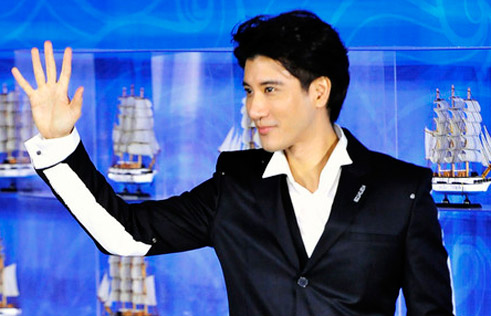King Tut's golden mask attracts tourists after back on display
By Xinhua In Cairo ( China Daily ) Updated: 2015-12-26 10:07:36
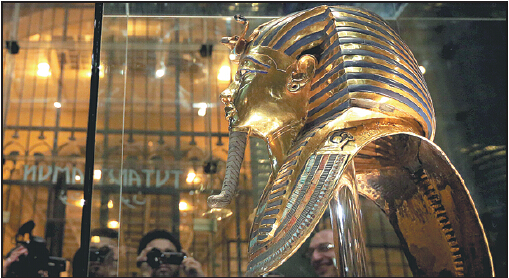 |
|
The golden mask of King Tutankhamun is displayed inside a glass cabinet at the Egyptian Museum in Cairo, Egypt.[Photo/Agencies] |
Eager foreign and local visitors once again were gathering around the gold and blue mask of legendary Egyptian pharaoh Tutankhamun at the Egyptian Museum in Cairo after its restoration. "It is so exciting to see the mask here ... I came today just to have a close look at this breathtaking piece of art," says Kevin Tan, a Chinese tourist who was visiting Egypt for the first time.
Inside a glass showcase under spotlights, the glittering mask attracted hundreds of tourists who came to welcome the priceless back home.
The Egyptian authorities announced that the golden burial mask of King Tut was put back on display at the Egyptian Museum after eight weeks of restoration by a team of Egyptian and German professionals.
In January, media reported that the long shinny blue beard of the king was damaged by the museum's cleaning workers and then was glued back onsite hastily and unprofessionally in August 2014.
According to reports, dried glue was visible along the joints between the beard and the mask. This led the Egyptian government to seek the help of professional conservators from Germany to restore the matchless archaeology.
To help accelerate the fixing process, the German ministry of foreign affairs donated 50,000 euros for the restoration process of the mask which started on Oct 10.
"It is done," German conservator Christian Eckmann, who oversaw the restoration work, says at the Egyptian Museum.
That the mask was back at the museum was happy news for many who came to take photos with the golden piece of art, especially after the museum's administration broke a taboo by allowing the entry of cameras into the museum for one month.
"I'm so lucky because my flight back home will take off tonight. I'm happy I had the chance to see and take photos with fantastic mask," Tomoko Shimiza, a Japanese tourist says as she poses to take photos next to the mask.
The return of the mask to the museum was not easy for restorers who carried out the repair process. It took the team more than two months to accomplish this mission meticulously and successfully.
Eckman says during the restoration the team discovered an internal gold tube which is still stuck in the beard. The tube was used to connect the beard to the mask.
"This was one of the most challenging procedures to separate this internal tube in order to clean the beard," he adds.
Mahmoud Halwagy, head of Museums at Egypt's Ministry of antiquities, says that the repair was great and very professional.
He confirms that the mask has gone through a complete scientific analysis and laser scanning, and the beard detachment from the mask and the removal of epoxy were carried out with very simple materials.
The process also included warming the mask to facilitate the removal of the epoxy, he adds.
Tutankhamun, who ascended to the throne at the age of 9 and died at 19, is the world's best known pharaoh of ancient Egypt. The young king ruled from 1332 BC to 1323 BC, during a period known as the New Kingdom in Egypt's history.
He won his fame for his tomb, which was discovered by British Egyptologist Howard Carter in 1922 and has remained one of the best preserved.
When Carter discovered the treasure, the ceremonial beard was already loose and Carter himself removed it for the first time. In December 1925, Carter did the first restoration of the mask.
"90 years after Carter accomplished the first restoration of the mask in December 1925, we have the pleasure to present the mask in its original form," Eckmann says.
|
|
|
|
|
|
|
|






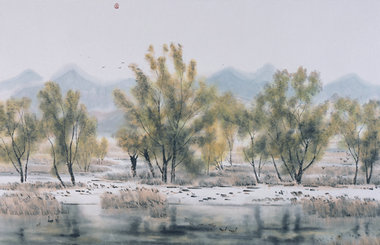
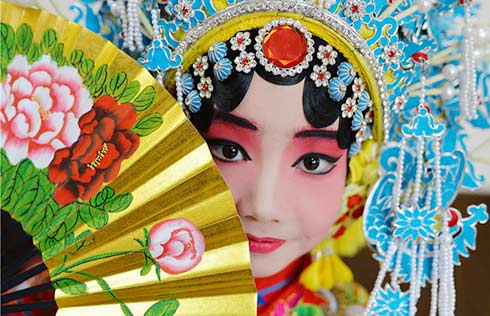













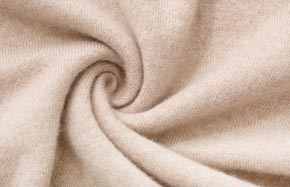



 Raymond Zhou:
Raymond Zhou: Pauline D Loh:
Pauline D Loh: Hot Pot
Hot Pot Eco China
Eco China China Dream
China Dream China Face
China Face
